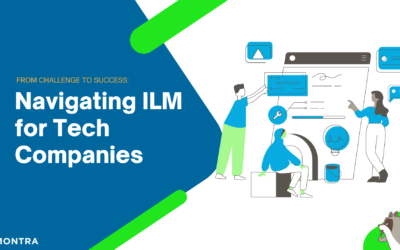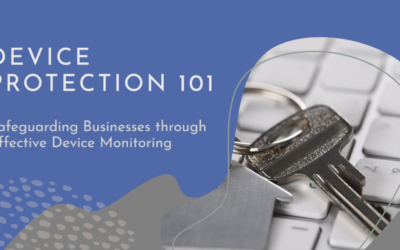Phishing is a common tactic for cybercriminals to gain access to your organization’s sensitive data. Furthermore, a study by Deloitte reveals that phishing attacks represent 38% of all incidents involving cybercrime. With the increasing dependence on technology, cyberattacks have also become more sophisticated, making it challenging to detect and stop phishing attempts. As a CIO or CISO, it’s crucial to ensure that employees are aware of the risks of phishing and know how to identify and respond to these threats. Data from Cybersecurity Ventures predicts that cybercrime, including phishing, will cost the world $6 trillion annually by 2021. In this post, we’ll go over five ways to identify and stop phishing attempts in your organization.
1. Educate Your Workforce
One of the most crucial steps in preventing phishing attacks is to educate your employees. According to a report by Proofpoint, 83% of global respondents experienced phishing attacks in 2018. Cybercriminals often target employees with phishing scams, and employee negligence is the top cause of data breaches. A study by Verizon found that 30% of phishing messages get opened by targeted users. Therefore, it’s crucial to train your employees and make them aware of phishing tactics and how to recognize them. Educate your employees on how to identify suspicious emails, including typos, grammatical errors, and unfamiliar sender addresses. Training should also include the proper response in case of a phishing attempt, such as reporting to the IT department or deleting the email.
2. Foster a Security Culture
Creating a culture of security within your organization is essential in promoting security awareness and preventing phishing attacks. Encourage employees to report suspicious events, share security tips, and seek assistance when needed. Emphasize the importance of maintaining a culture of security, and make it an ongoing, high-priority effort. According to a survey by Ernst & Young, 87% of organizations identified a lack of security culture as their primary obstacle to cybersecurity effectiveness. Similarly, Cisco’s 2020 benchmark study found that organizations with a strong security culture have lower breach costs – a median of $62,000 compared to the median of $330,000 in organizations with a poor security culture. Furthermore, a study from Gartner suggests that a strong security culture helps organizations adapt to the evolving threat landscape, reducing the likelihood of successful cyber attacks by up to 50%. Finally, a study by the Sans Institute suggests that organizations with a strong security culture have reported up to a 70% decrease in phishing susceptibility.
These results of these studies underscore the importance of fostering a security culture within your organization in order to reduce the risk of cyber threats like phishing.
3. Conduct Regular Testing
Regular penetration testing and security assessments are essential to identifying vulnerabilities in your system. The 2020 CREST Penetration Testing report highlights how mock phishing attacks can help uncover weaknesses in an organization’s security protocols, thus providing opportunities for improvement. Conducting these mock phishing attacks, where employees are given email messages that mimic a real phishing attempt, can help uncover weaknesses in your security protocols. These tests enable you to identify areas of weakness and take proactive measures to prevent future attacks.
This testing has a direct impact on cost. A study by the Ponemon Institute shows that organizations employing regular security testing identified breaches 27% faster, with a 38% lower cost of response. Similarly, the 2021 Data Breach Investigations Report from Verizon found that organizations that conducted regular testing and employed an incident response team reduced the cost of a data breach by as much as $14 per worker per year.
4. Use Security Tools
According to McAfee, keeping your software updated can prevent up to 85% of targeted attacks. Your organization should leverage advanced security tools to detect and prevent phishing attacks. Anti-phishing software is an essential line of defense to safeguard against phishing scams. These tools can help identify and block fraudulent emails, websites, and other malicious content. It’s also important to ensure that the software and systems your organization uses are up-to-date with security patches and the latest updates. The Sophos State of Endpoint Security Today offers a detailed examination of how anti-phishing tools can help businesses to detect and block fraudulent emails and malicious content. Deploying up-to-date security tools and keeping software patched is a significant step in minimizing the likelihood and impact of phishing attacks.
5. Enable Multi-Factor Authentication
Several cybersecurity reports underscore the importance of multi-factor authentication (MFA) as a critical element in protecting an organization’s data including the Microsoft Security Intelligence Report and a report by LoginRadius, which both indicate that 99.9% of cyberattacks can be prevented by implementing MFA. Moreover, a Google study found that on-device prompts, a form of two-step verification, helped to prevent 96% of bulk phishing attacks and 76% of targeted attacks.
Having a robust authentication mechanism is essential in protecting your organization’s data. MFA can mitigate the risk of attacks by adding an extra layer of security. A strong password combined with factors such as biometric authentication or two-step verification can make it difficult for attackers to infiltrate your systems.
In Summary
Phishing attacks are a real threat to organizations of all sizes, and the impact of a successful attack can be devastating. As a CIO or CISO, it’s your responsibility to ensure that your organization has the necessary measures in place to prevent and mitigate these attacks. By educating your workforce, fostering a culture of security, and conducting regular testing, using security tools, and enabling multi-factor authentication, you can reduce the risk of a successful phishing attack and protect your organization’s sensitive data. For deeper insights into the severity of phishing attacks and the necessity of the measures outlined above, you might want to consult the following resources:
- Verizon’s 2021 Data Breach Investigations Report provides updated statistics on the prevalence of phishing in modern cyberattacks.
- Proofpoint’s 2021 State of the Phish Report gives an informative look at the current phishing landscape and the effectiveness of employee education programs.
- The National Cyber Security Centre’s Guide on Two-factor Authentication emphasizes the importance of multi-factor authentication in preventing unauthorized access.
- This article on Security Culture by SecurityIntelligence explains how fostering a security culture can aid in reducing cybersecurity risks.
- Lastly, the annual Penetration Testing report by Rapid7 offers insights into the crucial role that regular security testing plays in bolstering an organization’s cybersecurity posture.
If you are looking for a partner that can assist you in managing the security of your workforce, Montra can help. With our software and processes, we can help you keep your business safe from phishing and other security threats. Contact us today to get started: info@montra.io or +1-404-665-9675.



